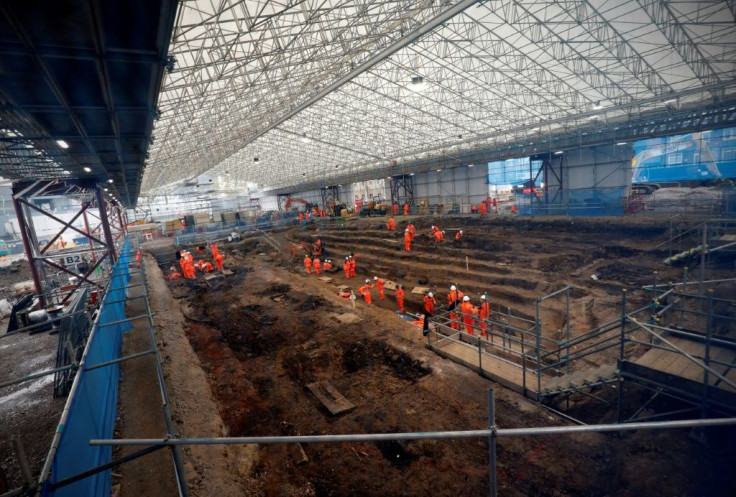Explorer Who Put Australia On The Map To Be Reburied In UK

The remains of the first British explorer to circumnavigate Australia are to be reburied in his home village after being discovered near a busy London railway station.
The grave of Captain Matthew Flinders, who popularised Australia's name, was discovered in January in a built-over former burial ground behind Euston terminus.
The site was being excavated for the HS2 high speed rail project, which will eventually link London with Birmingham and Manchester.
Flinders died aged 40 on July 19, 1814 -- the day after the publication of "A Voyage to Terra Australis", which described his 1802-1803 circumnavigation of Australia and proved that it was a continent.
With an estimated 40,000 remains at the former Saint James's Church burial ground, archaeologists were not sure they were going to find Flinders, whose resting place had been subject to much speculation.
However, the ornate lead nameplate on his coffin was well-preserved, enabling archaeologists to identify the grave.
Flinders will be reburied in the parish church of Saint Mary and The Holy Rood in Donington, his home village in Lincolnshire, eastern England.

Flinders' relatives and the local community had asked for his remains to be reinterred where he grew up before joining the Royal Navy.
"It is fitting that the last voyage of Captain Matthew Flinders will be back to the village of Donington," said Helen Wass, HS2's head of heritage.
"This local boy from Donington put Australia on the map due to his tenacity and expertise as a navigator and explorer.
"The Flinders name is synonymous with exploration, science and discovery, and HS2, through its archaeology programme, will ensure that we maximise the opportunities for further academic and scientific study."
Archaeologists have studied his skeleton.
The Euston excavation was one of Britain's largest ever digs, going down as deep as eight metres (26 feet), with the site protected from the elements under an 11,000 square-metre roof.
Flinders is a hero for many Australians of European origin, with stations, streets, squares and towns across the country named after him.
His remains will be transferred to the Diocese of Lincoln for safekeeping until the burial arrangements are made.
© Copyright AFP {{Year}}. All rights reserved.




















